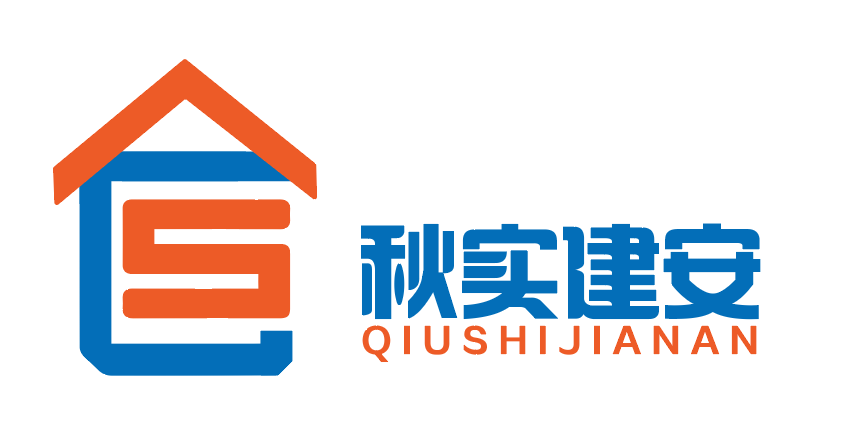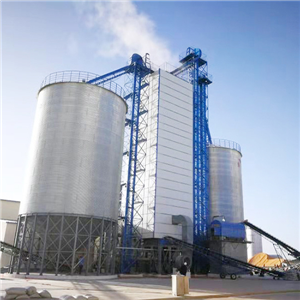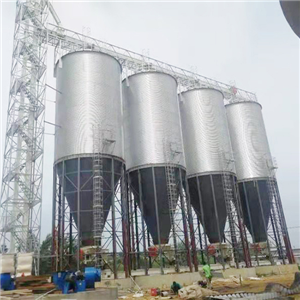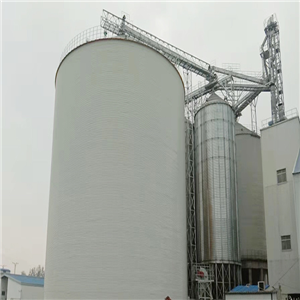more products
News
Products
Featured Products
Contact Details
LIAONING QIUSHI Unlocks Grain Storage Quality: Research-Driven Drying Solutions for Corn & Paddy
25-08-2025
The link between grain drying and long-term storage quality is a critical yet often overlooked factor in safeguarding grain security. For corn and paddy—two staple grains globally—suboptimal drying processes can lead to irreversible quality degradation during storage, from increased breakage to toxin contamination. Drawing on decades of industry research and on-site practice, LIAONING QIUSHI Silo Equipment Engineering Co., Ltd. has developed tailored drying solutions that address the unique needs of corn and paddy, ensuring their quality remains stable from harvest to storage. Backed by peer-reviewed studies and real-world data, these solutions are reshaping how farmers and grain facilities protect their crops.
Drying: The Make-or-Break Step for Storage Quality
Freshly harvested corn and paddy typically carry high moisture content (often 20%–25% for corn, 18%–22% for paddy). Without scientific drying, excess moisture triggers heat buildup and mold growth in storage—costing the industry millions in annual losses. Research highlights that drying parameters, including temperature, airflow rate, and cooling speed, directly impact grain’s physical structure and chemical stability, laying the groundwork for its storage performance.
Corn: Balancing Breakage Control and Fatty Acid Stability
Corn’s hard kernel structure is vulnerable to mechanical and thermal damage during drying. Studies by agricultural researchers (Cui et al.) show that aggressive drying—such as sudden high temperatures (over 60°C) or rapid moisture reduction—can push corn breakage rates above 15% and crack rates to 20%, compared to 5% and 8% respectively with optimized parameters. These physical flaws accelerate oxidation during storage: a Northeast China-based trial (Zhang, 2017) found that corn with over 10% breakage had a 20% higher fatty acid value (FAV) after 6 months of storage than intact kernels. FAV, a key indicator of corn quality, exceeded safe limits (45 mg KOH/100g) in just 9 months for poorly dried corn, rendering it unfit for feed or processing.
LIAONING QIUSHI’s corn-specific drying systems address this by using a stepwise temperature ramp (starting at 40°C, gradually increasing to 55°C) and integrated tempering phases. This approach reduces thermal stress on kernels, keeping breakage rates below 6% and ensuring FAV remains stable at 35–40 mg KOH/100g even after 12 months of storage.
Paddy: Low-Temperature Drying Preserves Freshness and Texture
Paddy is far more sensitive to heat than corn—high drying temperatures damage its aleurone layer, accelerating starch degradation and flavor loss. Research by Zhu et al. compared high-temperature (over 60°C) and low-temperature (40–50°C) drying for japonica paddy: high-temperature drying led to a 30% faster FAV increase during storage, while low-temperature drying maintained paddy’s cooking quality (e.g., viscosity, hardness) for 2–3 months longer.
LIAONING QIUSHI has advanced this further with its vacuum drying + atmospheric tempering technology. Inspired by studies (Liu et al., 2016) showing this combination reduces paddy chalkiness and fissuring, our systems minimize kernel damage while accelerating moisture removal. Field tests show paddy dried with this method has a 50% lower fissure rate and retains 15% more soluble proteins than traditional hot-air drying, extending its shelf life and maintaining milled rice quality.
Storage Performance: How Drying Sets the Stage for Longevity
The impact of drying extends far beyond moisture reduction—it directly dictates how grain holds up during months of storage. For corn, LIAONING QIUSHI’s optimized drying process ensures consistent quality even in harsh storage conditions. A 2023 trial with a Northeast China grain cooperative found that corn dried using our stepwise method had a 50% lower mold count after 12 months than corn dried with conventional high-temperature systems.
For paddy, our low-temperature drying solutions address a key industry pain point: post-harvest freshness loss. In collaboration with a Jiangsu-based rice mill, we tracked paddy dried with our vacuum-atmospheric system: after 8 months of storage, the paddy’s germination rate remained at 85% (vs. 65% for traditionally dried paddy), and milled rice had a 10% higher whiteness score—critical for meeting consumer and export standards.
LIAONING QIUSHI: Turning Research into Actionable Solutions
At LIAONING QIUSHI, we don’t just build drying equipment—we translate decades of agricultural research into practical, scalable solutions for our clients. Our drying systems are tailored to regional grain characteristics: for Northeast China’s high-moisture corn, we prioritize gradual drying to prevent breakage; for South China’s paddy, we focus on low-temperature processes to preserve aroma and texture.
Moreover, our solutions integrate seamlessly with our intelligent silo systems, creating a “dry-store-monitor” closed loop. Equipped with real-time moisture and temperature sensors, our drying equipment automatically adjusts parameters based on grain type and initial moisture, while our silo monitoring tools track quality changes during storage—ensuring grain remains safe and high-quality from day one.
Conclusion: Drying Innovation for Global Grain Security
As global demand for stable, high-quality grain grows, the role of scientific drying becomes more critical than ever. LIAONING QIUSHI’s research-backed solutions are not just protecting our clients’ investments—they’re contributing to a more resilient grain supply chain. By unlocking the secrets of corn and paddy storage quality, we’re helping farmers, cooperatives, and grain facilities turn every harvest into a long-term asset.
To learn how our customized drying solutions can enhance your grain storage quality, visit www.qssilo.com or contact our technical team at sales@qssilo.com.
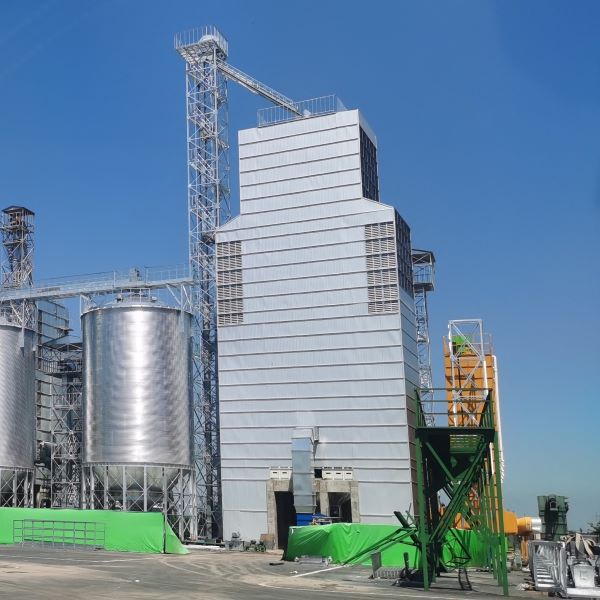
grain dryinggrain dryinggrain dryinggrain dryinggrain dryinggrain dryinggrain dryinggrain dryinggrain dryinggrain dryinggrain dryinggrain dryinggrain dryinggrain dryinggrain dryinggrain dryinggrain dryinggrain dryinggrain drying
Get the latest price? We'll respond as soon as possible(within 12 hours)
